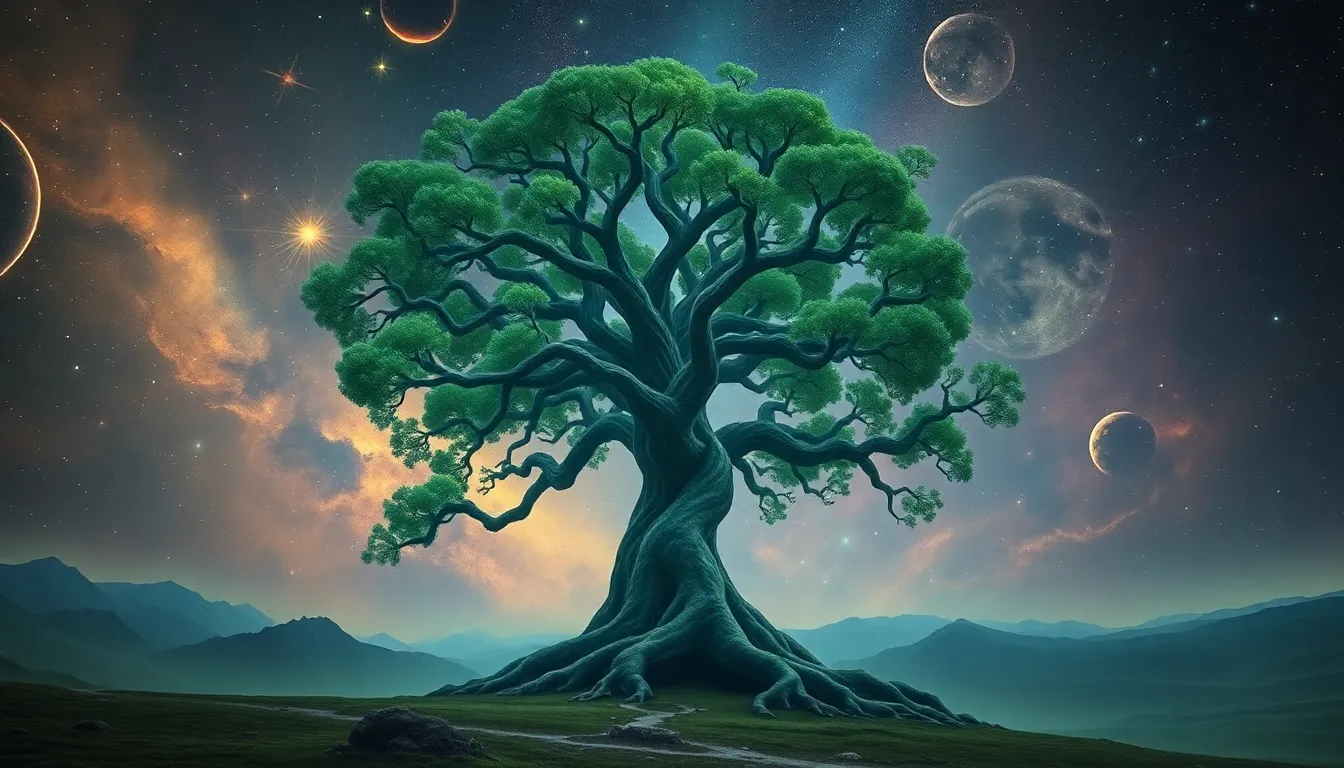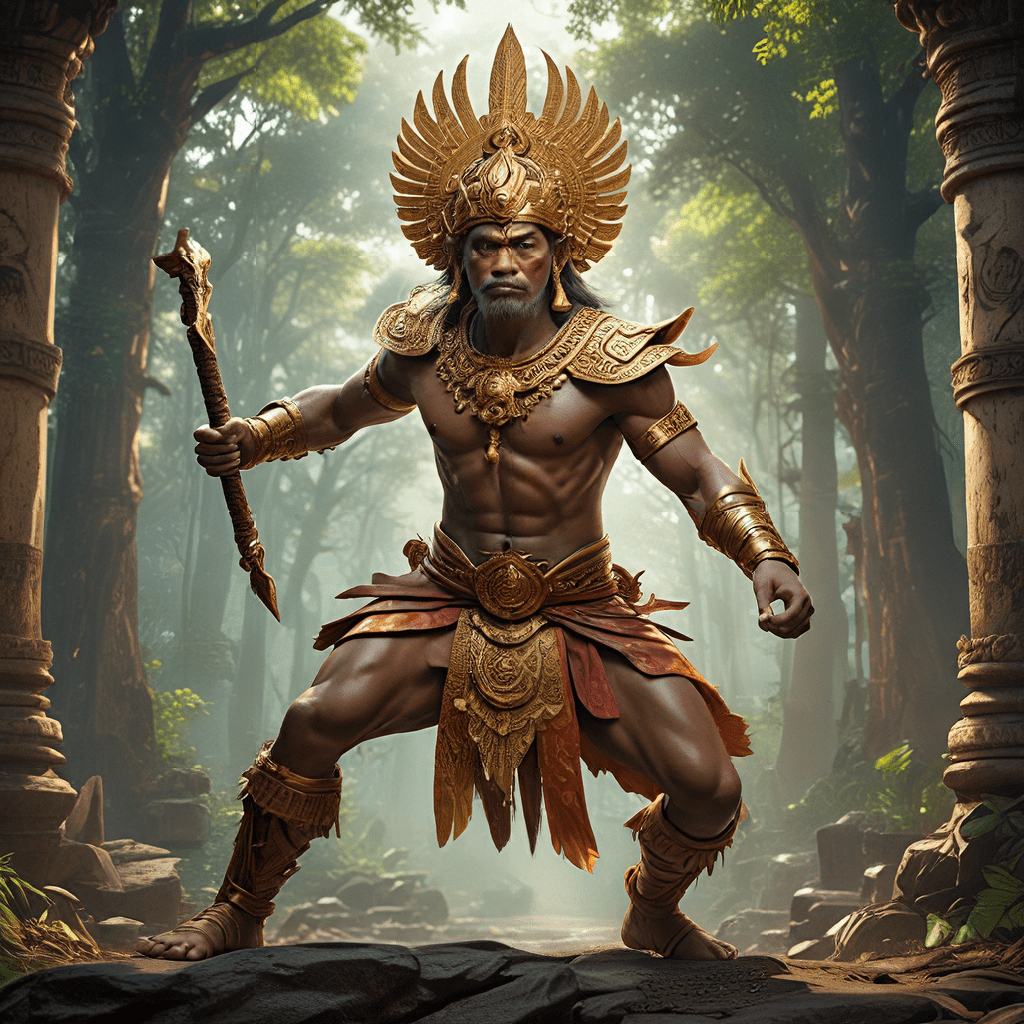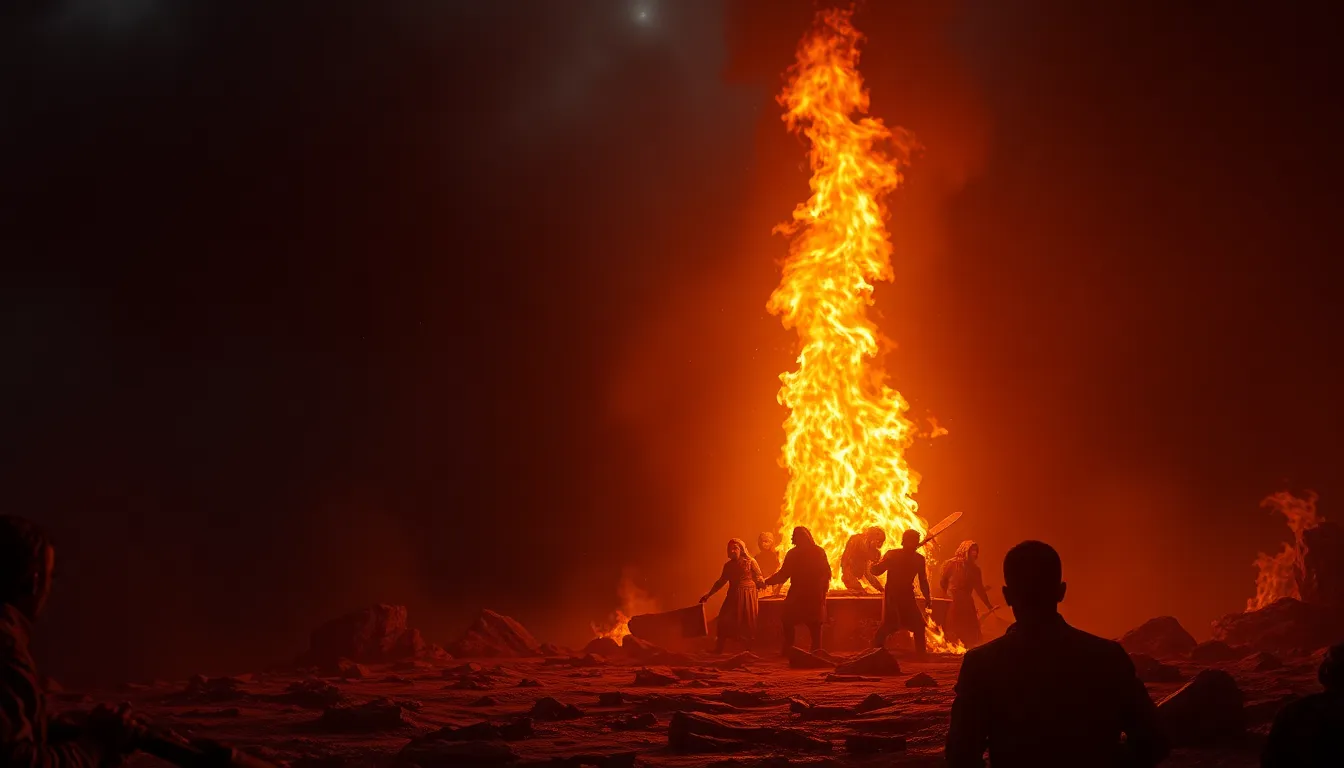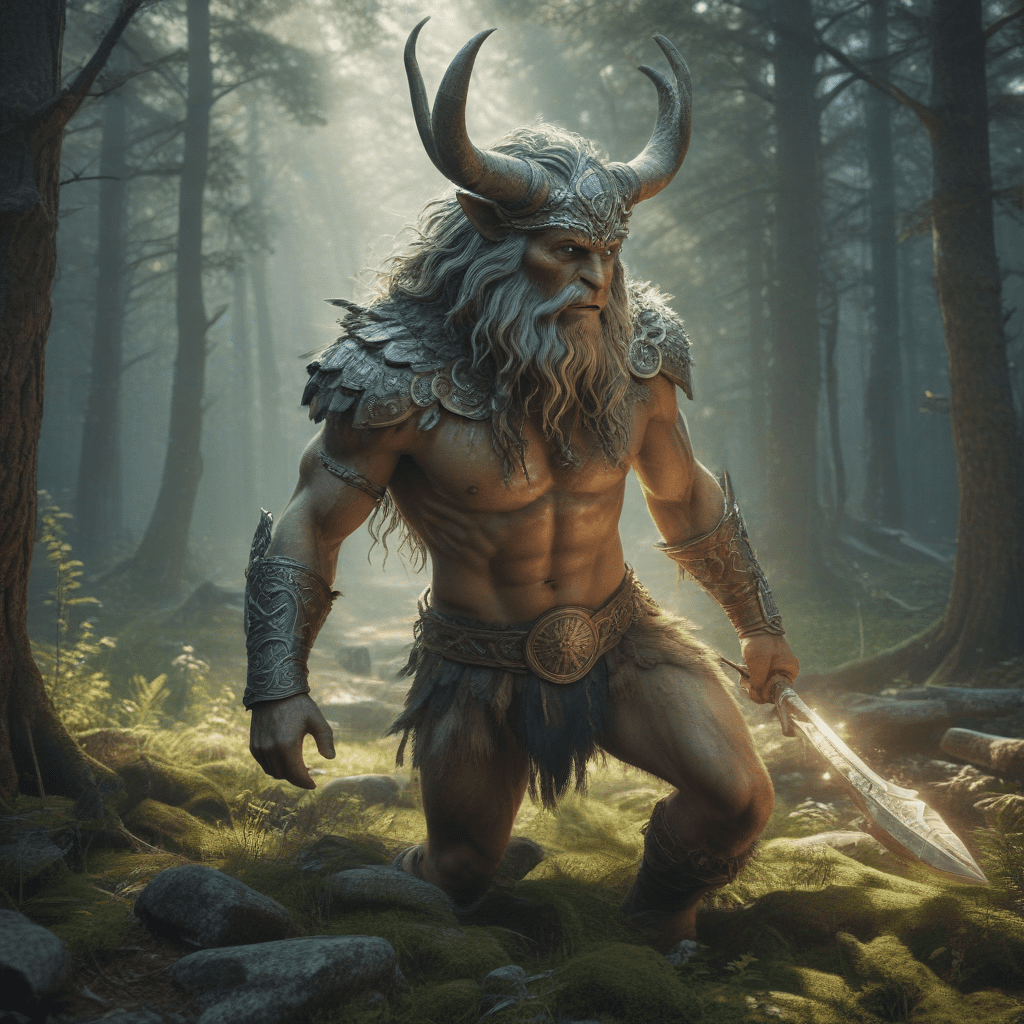Yggdrasil: The Cosmic Tree Connecting Worlds in Norse Myth
Introduction to Yggdrasil
Yggdrasil, often referred to as the World Tree, is a central symbol in Norse mythology, representing the interconnectedness of all realms of existence. This immense ash tree is not just a physical entity; it embodies the cosmos itself, serving as a bridge between various worlds. Its significance extends beyond mere mythology, as it encapsulates the themes of life, death, and rebirth.
The Mythological Roots of Yggdrasil
The origins of the Yggdrasil myth can be traced back to ancient Norse beliefs, where it was seen as a source of life and a symbol of the universe. Yggdrasil is often associated with creation myths, representing the foundation of existence.
In comparison to other cosmological trees in world mythology, such as the Tree of Life in various cultures, Yggdrasil stands out due to its unique characteristics and the depth of its symbolism. Other cultures have similar motifs, but Yggdrasil’s intricate connections to fate, time, and the cosmos lend it a distinct place in mythology.
The Structure of Yggdrasil
Yggdrasil is described as an enormous ash tree, stretching high into the heavens with roots that delve deep into the earth. Its branches reach out over the nine realms, creating a physical and spiritual connection between them. The vastness of Yggdrasil symbolizes the endless possibilities and paths of existence.
The nine realms connected by Yggdrasil include:
- Asgard: The realm of the gods.
- Midgard: The world of humans.
- Vanaheim: The realm of the Vanir gods.
- Alfheim: The land of the light elves.
- Svartalfheim: The realm of the dwarves.
- Jotunheim: The land of the giants.
- Niflheim: The realm of ice and mist.
- Muspelheim: The realm of fire.
- Helheim: The land of the dead.
The Realms of Yggdrasil: A Closer Look
Each of the nine realms connected by Yggdrasil plays a vital role in Norse mythology:
- Asgard: Home to the Aesir gods, including Odin and Thor, it represents the divine realm.
- Midgard: The realm of humans, connected to Asgard by the Bifrost, the rainbow bridge.
- Vanaheim: Known for its fertility and prosperity, inhabited by the Vanir gods.
- Alfheim: A realm of light and beauty, home to the light elves who are associated with nature.
- Svartalfheim: The underground realm of dwarves, known for their craftsmanship and creation of magical artifacts.
- Jotunheim: The land of giants, often in conflict with the gods, symbolizing chaos and raw nature.
- Niflheim: A cold, dark realm that embodies the primordial chaos before creation.
- Muspelheim: A fiery realm, home to fire giants, representing destruction and transformation.
- Helheim: The land of the dead, ruled by Hel, where those who did not die in battle dwell.
Inhabitants of Yggdrasil
Yggdrasil is not just a passive entity; it is home to various beings that play significant roles in maintaining the balance of the cosmos. Key inhabitants include:
- The Norns: Three female figures who control fate, weaving the threads of life for gods and humans alike.
- Dragon Nidhogg: A creature that gnaws at the roots of Yggdrasil, symbolizing destruction and decay.
- Various animals: Including a squirrel named Ratatoskr that runs up and down the tree, delivering messages between the eagle at the top and the serpent below.
Each of these beings contributes to the ongoing narrative of Yggdrasil, representing different aspects of existence, such as fate, chaos, and communication.
Yggdrasil in Norse Creation Stories
Yggdrasil plays a crucial role in Norse creation stories. It is said that the world was formed from the body of the giant Ymir, and Yggdrasil serves as the foundation of this new world. The tree symbolizes the cyclical nature of life and death, as it connects the realms of the living and the dead.
The roots of Yggdrasil reach into different realms, allowing for the flow of life and energy, creating a balance between creation and destruction. This cyclical existence is a core theme in Norse mythology, highlighting the interconnectedness of all beings.
Symbolism and Themes Associated with Yggdrasil
The symbolism of Yggdrasil encompasses a range of themes, including:
- Interconnectedness: Yggdrasil illustrates how all realms and beings are interlinked.
- Fate: The Norns’ control over destiny highlights the importance of fate in Norse beliefs.
- Knowledge: The tree is a source of wisdom, as Odin sacrificed himself to gain knowledge from its roots.
- Growth and Resilience: Yggdrasil endures despite the forces that threaten it, symbolizing endurance through trials.
- The Passage of Time: Yggdrasil represents the continuity of existence through the cycles of life and death.
Yggdrasil in Viking Culture and Rituals
Yggdrasil had a profound influence on Viking society, art, and spirituality. It was a symbol of community and connection among the Norse people. Yggdrasil was often depicted in Viking art, appearing on weapons, jewelry, and carvings.
Rituals honoring Yggdrasil included offerings made at sacred trees, where individuals sought blessings and guidance. The tree was viewed as a conduit between the divine and the mortal, making it a focal point for spiritual practices.
Modern Interpretations and Representations of Yggdrasil
In contemporary culture, Yggdrasil continues to inspire literature, art, and media. Its image and symbolism have been incorporated into various forms of storytelling, including books, movies, and video games.
The resurgence of interest in Norse mythology has led to a renewed appreciation for Yggdrasil, as it represents a rich tapestry of interconnected narratives and themes that resonate with modern audiences.
Conclusion: The Enduring Legacy of Yggdrasil
Yggdrasil stands as a powerful symbol of interconnectedness, fate, and the cyclical nature of existence in Norse mythology. Its legacy endures, providing insights into the Norse worldview and its spiritual significance.
In today’s cultural and spiritual contexts, Yggdrasil remains relevant, reminding us of the bonds that connect all beings and the eternal cycles of life. As we explore these ancient narratives, Yggdrasil continues to inspire reflection on our place in the cosmos.




